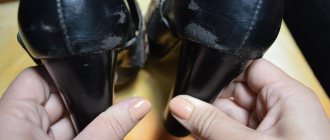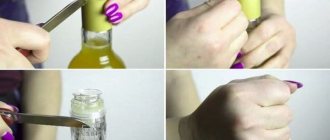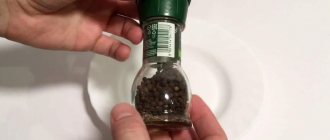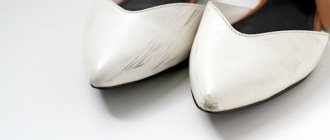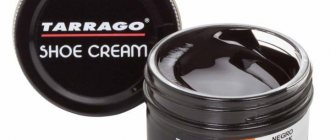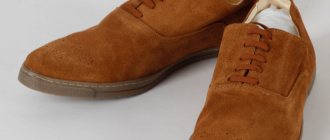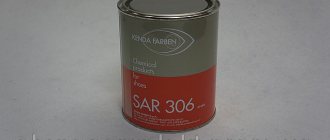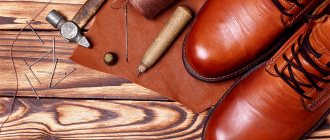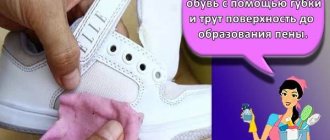Deformation and damage to shoes is a common occurrence. This may be due to both natural “wear and tear” and unfavorable weather conditions (snow, rain, temperature changes). Often, it is the sole that suffers. It peels off, causing the seal to be lost. However, before you run to the store for a new pair, you can try to fix the defect yourself at home. A special glue comes to the rescue.
Photo: Pixabay.com
The qualitative composition of such products should have a number of characteristics.
Among the main ones:
- Durable grip.
- No deformation of shoes at the joints.
- Long lasting effect.
- Elasticity of seams.
- Resistant to moisture and frost.
To begin with, it is worth noting that shoe adhesives, depending on the basis of the formula, are conventionally divided into the following types:
- Rubber.
Its purpose is auxiliary work. For example, using such means you can connect parts of textiles, insoles, and other elements. Here it is worth considering poor resistance to moisture and low temperatures. Therefore, rubber glue is only good for summer open shoes. - Polychloroprene.
It is used to “adhere” rubber soles, felt and leather insoles. It is resistant to moisture and frost. The only downside is that it is not suitable for polyurethane. - Polyvinyl chloride
- based on adhesive resins. Good for seams and toes. - Polyurethane.
It is considered very durable, fixed “tightly”. However, it is worth considering that the volume will increase after complete drying. Ideal for gluing soles to textiles or leather. It is important to be careful when working, because residues of the composition are difficult to remove from the surface. - “Instant”,
or - universal. Suitable for minor repairs. It has a convenient release form, and even a beginner can handle it.
As a rule, all packages of specialized glue are marked “For shoes.”
We present the rating of shoe adhesives 2022. The best 11 products that were selected by our experts based on user reviews and ratings.
| Rating (2021) | Prices, ₽ | A country |
| 1. UHU Schuh & Leder | from 260₽ | Germany |
| 2. Super Moment | from 130₽ | Ireland |
| 3. Kalina M Kleyberg | from 300₽ | Russia |
| 4. Henkel drop | from 400₽ | Russia |
| 5. Contact Packaging of super glue “Contact” | from 660₽ | Russia |
| 6. Moment Marathon | from 120₽ | Russia |
| 7. Anles nairite | from 170₽ | Russia |
| 8. Second 403-109 | from 70₽ | China |
| 9. Polytech Instrument 88 | from 80₽ | China |
| 10.Strength SSBL1-15 | from 40₽ | China |
| 11. Novbytkhim Sprut | from 40₽ | Russia |
Gluing the sole at home
To repair shoes whose soles have come off, you need to purchase glue with the maximum degree of adhesion. Instructions for carrying out work:
- Clean the shoe and dry it. The shoes must be completely dry before applying the glue.
- The sole that has come off in several places should be completely torn off and then re-glued.
- Using a sharp metal spatula, clean the sole of the old glue, then go over it with sandpaper. Wipe the base thoroughly with acetone to degrease.
- Lubricate the sole with glue and repeat the same with the surface of the shoe. The layer must be made thin - up to 3 mm. Step back 3 mm from the edges so that the glue does not come out and stain the product.
- Wait a couple of minutes for the composition to reach the desired thickness, then apply the sole. Press it carefully, eliminating the presence of voids.
- Fix the boot with the sole pressed for 12-24 hours (depending on the instructions). It is better to put a weight on top and stuff the inside of the shoe with newspaper to maintain its shape.
If the glue involves the use of a hot gluing method, then the composition must be applied in the same way, and after 30 minutes the gluing area should be heated with a hair dryer. Then press the sole tightly again and secure it in this position. When using any glue, you should wear shoes outside no sooner than after 2 days.
If the sole of the shoe is made of polyurethane, the instructions change. It is necessary to cut out a piece of cotton fabric of the required size in advance, insert it between the hard sole and the base, gluing it on both sides. When the sole is “honeycomb” (has voids inside), they will have to be filled with scraps of porous rubber, bending the insole. After the void is filled with sealant. The insole most often has to be replaced with a new one.
How to tape the soles of sneakers
Troubles often arise with sports shoes, because they are subjected to serious loads and are used intensively. Most often, the sole deteriorates or the toe area tears.
How to seal a hole
If you step on a sharp or too hard object in your sneaker, a hole may appear. It is sealed like this:
- Clean the edges of the hole from dirt, degrease with alcohol and acetone;
- if the hole is too big, put a piece of fiberglass mesh inside;
- fill the hole with polyurethane glue or sealant, you can also use epoxy glue;
- cover the hole with paper tape, leveling the surface of the adhesive “patch”;
- wait until the composition dries completely.
Desmokol - the best glue for leather shoes
Synthetic polyurethane-based adhesive can be used for more than just shoe repair. It is also suitable for rubber and plastic. However, its application has its own tricks: after application, the glue must be allowed to dry completely, and then heated to +80 ° C. At this temperature, Desmokol is “activated” and firmly connects the parts to be glued.
Recommendations: 13 Best Work Shoes
15 best sports sneakers
16 best shoe models
Pros:
- Dries quickly - it usually takes only 10-15 minutes;
- The adhesive layer remains elastic after hardening;
- It adheres well to the porous sole, since it is able to expand and flow into small pores;
- Suitable for repairing shoes with textile uppers (sneakers, slip-ons, ballet flats);
- A variety of release forms - from small tubes to 20-kilogram cans intended for professional use;
- Inexpensive - a 40-gram tube of 40 can be bought for only 25-30 rubles.
Minuses:
- Flammable;
- Requires careful application - if the glue gets on the upper part of the shoe, it can no longer be cleaned.
NOVBYTHIM “Uran” – for shoes with polyurethane soles
This glue is considered an analogue of professional Desmokol and is best suited for repairing shoes with polyurethane soles.
Like other PU adhesives, it needs thermal activation, otherwise the gluing will not be as durable. However, the cold method in this case also turns out to be quite effective.
Pros:
- Suitable for repairing demi-season shoes, as it does not get wet under the influence of water;
- High elasticity of the adhesive layer prevents the shoes from deforming;
- There are two gluing methods available - hot and cold;
- A huge selection of packaging - from 50 ml tubes to 200 liter barrels;
- Long shelf life (2 years).
Minuses:
- Fire hazardous and toxic.
KENDA Farben SAR 30E – suitable for minor repairs
Nairite glue from an Italian manufacturer allows you to glue the rubber sole to almost any upper - regardless of the material. But it does best with minor repairs.
Another area of application for Nairit is the manufacture of custom-made shoes: for covering heels, gluing insoles, placing blanks on lasts and other assembly work.
Pros:
- Does not allow water to pass through;
- Does not harden or crack in the cold, always maintaining good elasticity;
- You can do without thermal activation, but it is precisely this that provides the strongest adhesion;
- It evaporates more slowly compared to nairites from other manufacturers, which gives time to correct flaws;
- If something goes wrong, the frozen composition can be reheated and re-glued.
Cons:q
- “Not friendly” with PU soles;
- It takes a long time to dry.
Criterias of choice
To determine the best glue for shoes, it is recommended to use the described rating, but you also need to know the basic rules and requirements when choosing it:
- Determine the purpose of the purchase, or rather the degree of complexity of the repair and materials for gluing.
- Before purchasing, carefully read the instructions and determine what the composition is intended for. The package must be marked “For shoes.”
- The composition must have a high degree of resistance to temperature and water.
- When doing your own repairs, it is better to buy small packages, since without prolonged use of the tube the composition dries out.
There is a large selection in stores, at different prices and quality, the best option in this case would be in the direction that will not affect the budget and will allow you to fasten torn shoes. The presented rating will help simplify the selection process and reduce possible options.
Properties of good glue
So which shoe glue is best to use and what properties should it have? As expert reviews show, a good composition should have the following qualities:
- The glue must reliably connect parts of products of any thickness.
- During the shoe repair process, individual parts should not lose their appearance or become deformed.
- The composition should fix individual parts of the shoe for a long time and with high quality.
- The seams obtained during the repair must be elastic.
- All joints glued with shoe glue must withstand low temperatures and moisture.
Which adhesive is not recommended to be used?
The substances listed in the previous section are the best options for gluing shoes yourself. There is also a group of products that are not recommended to be used if cracks have formed on the sole of your shoes. Do not buy these products:
- Super glue. A fairly hard material that roughly fixes and deforms the sole. Repairing the sole with such material is not recommended, as you will completely ruin the shoe.
- Ceiling tile adhesive. Can handle rubber and leather. This will leave traces that will be difficult to remove with improvised means.
- PVA. It is not stable. It is not recommended to seal a crack in your shoes, as it will immediately fall apart.
MOMENT “Marathon” - affordable glue for home use
This popular glue is universal. In this case, the manufacturer means that with the help of “Marathon” you can repair shoes with any combination of materials – even with a wooden (cork) sole.
After drying, the composition retains some elasticity, which is important for connecting flexible parts of shoes. It is sold in small tubes of 30 or 125 ml.
Pros:
- Waterproof;
- Has a wide temperature range – from -40 to +110 °C;
- Does not lose its properties when refrigerated during storage;
- Residues of fresh glue can be easily removed from the top of the shoe;
- A tube with a long spout is convenient when you need to pour glue into a narrow gap;
- The cap does not stick tightly to the tube;
- Shelf life is 2 years versus 1-1.5 for professional adhesives.
Minuses:
- Requires adherence to technology (cleaning, degreasing), otherwise the torn part of the shoe will have to be glued again and again.
What can I do to prevent my shoes from slipping?
You can also use glue to prevent shoes from slipping. Apply the pattern with Moment glue or other superglue to the sole, let it dry, and then rub it with coarse sandpaper. For greater effect, you can sprinkle a little sand on the still wet composition.
This anti-slip protection will last 1-2 weeks.
You can also glue special anti-slip/anti-icing pads.
If the sole bursts
If the sole cracks after the warranty period, a more complex restoration option is required.
What will be needed for repairs
- Scotch.
- High-quality polyurethane glue.
- Soldering iron.
- Small spatula.
- Copper tip for a soldering iron (you can take any piece of wire that is suitable in diameter, since it will have to be thrown away after repair).
- Fiberglass mesh.
- Small brush.
- Acetone.
- Hair dryer.
Important! Buy polyurethane adhesive only from well-known brands, such as TEROSON. There are quite a lot of fakes on the market at the moment, so you need to be more careful when purchasing.
How to use Desmokol
It is recommended to mix the glue thoroughly before use. Before starting work, the surface should be carefully treated: cleaned, if necessary, with sandpaper or degreased. A thin layer of glue must be applied to both parts of the product. There are certain rules. If the material absorbs well, then after 15 minutes you need to reapply a layer of glue. There is no need to connect the shoe parts. After this, you should wait up to 50 minutes. If necessary, it is recommended to activate the bottom of the shoe for 3 minutes at 75 °C. Now the individual parts of the product can be connected and then pressed. In this case, the force should be from 0.2 to 0.5 MPa. It takes a little time: from 15 to 20 s. Maximum strength is achieved at a temperature of 20 ° C for 2 days.
Polyvinyl chloride composition
So, what is the best shoe glue? Of course, one that can withstand the effects of adverse factors. Not every glue is capable of this. For example, polyvinyl chloride. It contains a resin that gives elasticity. Therefore, PVC glue is often used for joining leather parts and textile layers of products, as well as for gluing tape.
It is worth noting that such a composition is capable of well sealing the toe part of any shoe, protecting it completely from leaks.
